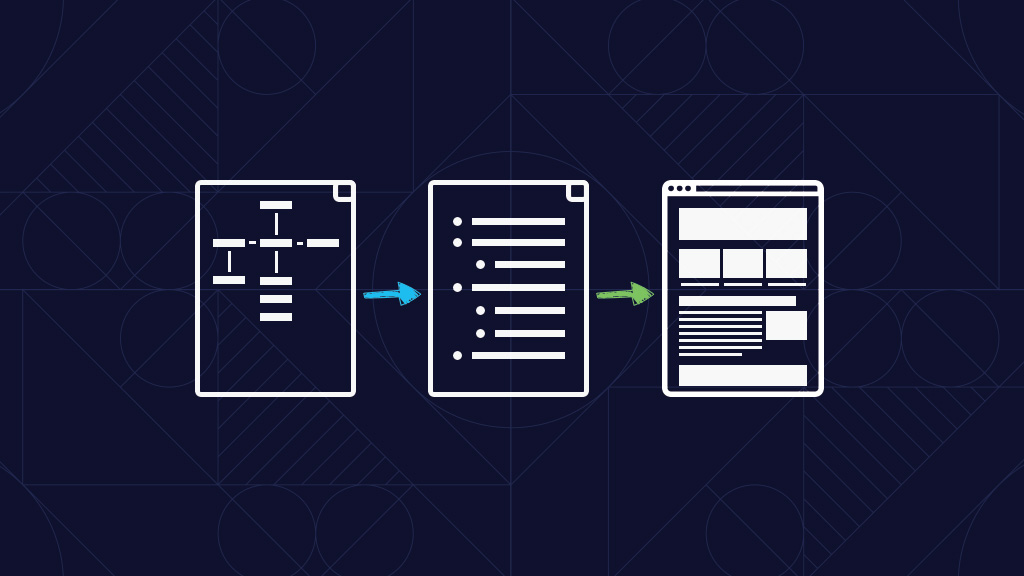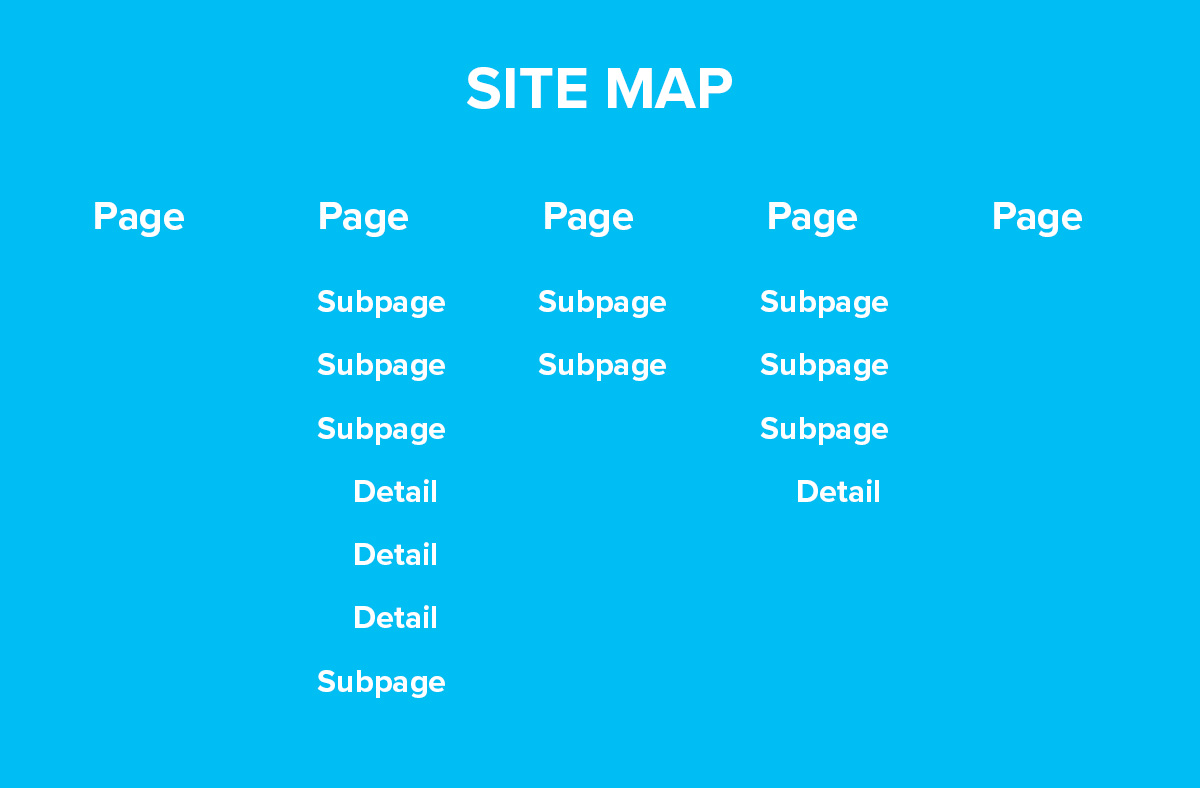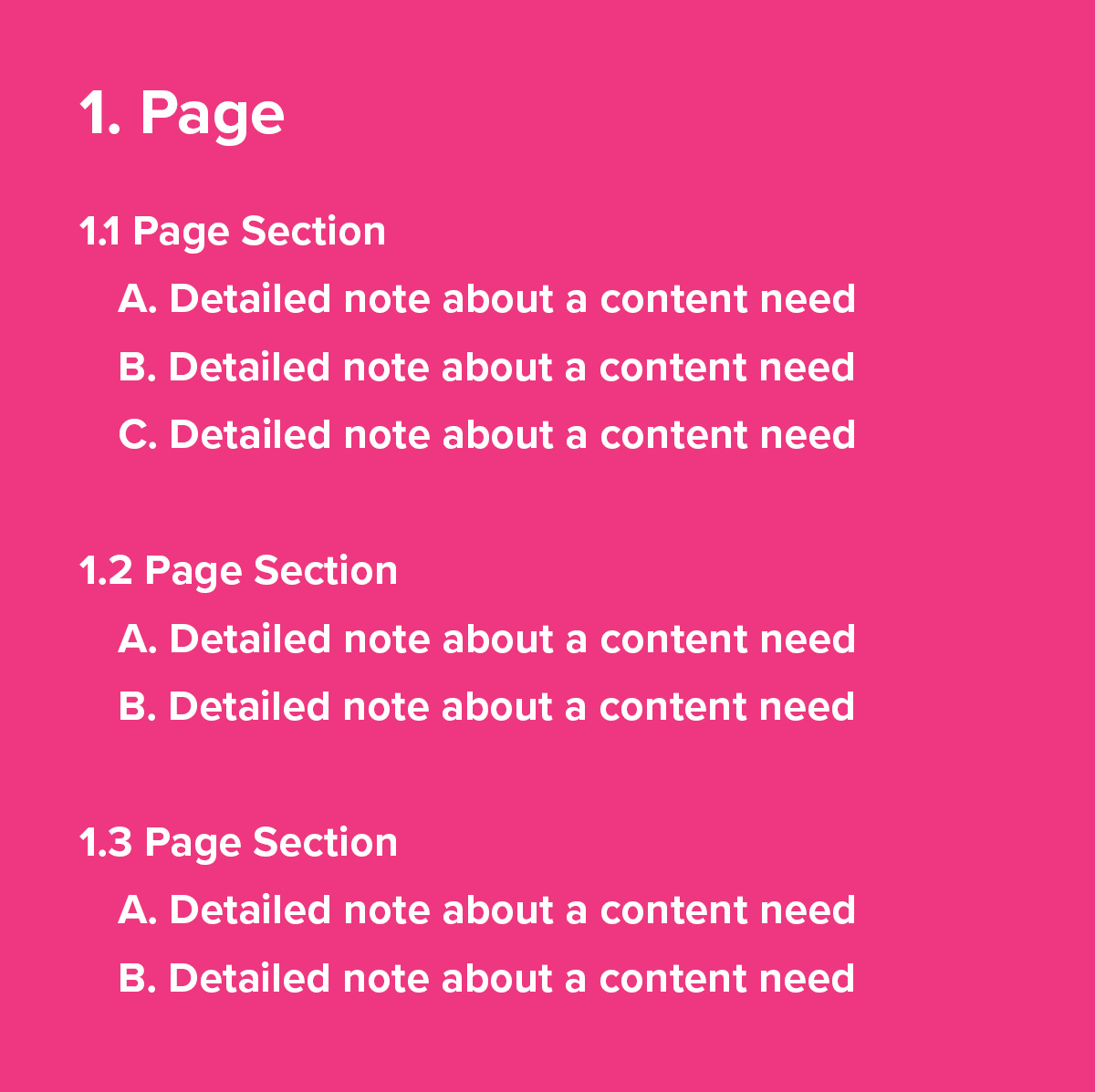 When it’s time to rebuild or update your website, everyone has a sense of the basics: we need someone to design it, someone to build it, and stuff to put on the pages.
When it’s time to rebuild or update your website, everyone has a sense of the basics: we need someone to design it, someone to build it, and stuff to put on the pages.
From there, it can get a little more complicated. You start making decisions based on budget, based on time, and based on talent or abilities. Often, all that stuff that needs to go on the pages gets cast aside in favor of the less accessible elements.
Design requires design software and an understanding of how to use it.
Development requires coding and programming knowledge.
Copywriting requires… well, this is where things often go off course.
It’s easy to assume that anyone with fluency in the language and knowledge of the subject matter can write the copy for your website. But the truth is that even without the incredibly specific writing skills that copywriters spend their careers honing, writing a website is about far more than putting relevant words on the page.
At Luminus, the process of writing a website from conception to completion takes 3 distinct phases. Yes – each of them is equally important. And yes – actual writing only happens in phase 3.
So before you tackle the copywriting for your next website, consider adding a few planning steps to ensure you’ve covered all of your content bases.
Phase 1: Site Mapping
 Site mapping is the critical process of determining the basic page structure of your website. This is where you need to ask yourself a few key questions about your site and information included in it.
Site mapping is the critical process of determining the basic page structure of your website. This is where you need to ask yourself a few key questions about your site and information included in it.
Site mapping is all about structure. It’s about determining which information deserves its own page, and how a user might expect to navigate to it. Do you need landing pages that link off to other pages? Do you create pages based on audience groups, or service structure? Which information needs to be front and center, and which can live a few clicks deep? What conversion are you hoping for, and does the page structure encourage that action?
When you’re making these choices, there are a lot of elements to consider, but one of them should consistently rise above the rest: what will your audience be looking for?
Site mapping brings together the concepts behind website architecture, user experience, user interface, and information architecture to ensure you have a solid, strategic plan for the remaining steps in website creation.
Phase 2: Content Mapping
 While site mapping involves many pieces (or players) of the website process, content mapping begins to narrow the focus. All that stuff that goes on the pages is called content, and there’s far more to it than writing a couple relevant paragraphs and uploading a photo.
While site mapping involves many pieces (or players) of the website process, content mapping begins to narrow the focus. All that stuff that goes on the pages is called content, and there’s far more to it than writing a couple relevant paragraphs and uploading a photo.
Content mapping is the step that takes your website content from top-of-mind information to strategic, intentional, professional copy that’s worthy of optimization and traffic generation. It’s the step that makes sure you’re including everything that will be important to your audience. It’s the step that allows a UI/UX designer to ensure the information is presented in the best way possible, and it allows the copywriter to ensure the information is written in a user-friendly way.
Content mapping is the single most important step in writing a website.
It’s also the step that most people skip.
Content mapping is the process of going through your site map page by page and outlining the information that should be included.
It’s extremely important that content mapping happens prior to copywriting, and completely independently. Ideally, you start from scratch on every page and put yourself in the shoes of a typical website visitor (establishing audience personas before tackling a website process is helpful). Don’t think about what you have to say – think about what a visitor will be hoping to read, see or learn on each page.
Then map out every section. What’s at the top of the page? Often it’s a banner area, which means you need a hero headline. Do you need an overview? What about features? Benefits? Teaser sections that link off to other pages? Blog articles? Photo galleries? Case studies? Testimonials? What information that’s specific to your product or service needs to be communicated? Do you need a CTA, and what is it? Where do you expect visitors might want to go when they get through the current page? Do all pages within a category have the same information, or are there necessary differences?
If you’re completing all the copy prior to a design phase, mapping out these sections is all you need to do. You’re ready to move to phase 3!
At Luminus, though, we prefer copy and design to be a synchronous collaboration so we take it a step further.
We begin to map out the format of each content section – what deserves a long paragraph, a short paragraph, a bulleted list with an intro sentence? Where do we need headlines, subheads, links, supporting graphics? The copywriter and the UI/UX designer work on this phase together, allowing them to work on their parts separately but with the knowledge that they’re working from the same recipe. Often, this is where the middle step of wireframing (or low-fi designs) can provide an extremely clear but highly simplified visual of your content map.
Content mapping can feel time consuming and complicated, but it is the piece that ensures you’re including all the information needed to build a successful website. Without content mapping, you run an enormous risk by relying on stream-of-consciousness writing to result in comprehensive, strategic copy across the website experience.
Phase 3: Copywriting
 This is the phase that many people want to start with.
This is the phase that many people want to start with.
But by taking it back a few steps and planning out your content before moving into this final stage, you’ll already have a detailed map of everything that needs to be included.
At Luminus, this is when we take stock of what we already know and what we may need additional information on (imagine the important information that would be left out if we skipped content mapping and just wrote what we already know!).
Page by page, section by section, now you simply write. You understand what belongs where, and what will be covered somewhere else. Each page within a category (i.e. each service page, each industry page, each product page) will have a parallel information structure. CTAs will be consistent and planned. And you can use keyword research to make sure each page is opted for the right traffic.
If planned properly, the copywriting is the easiest part. And success is built into the process. If you skip the content mapping stage, those “details” often get left out, because the writing phase is pulling too much of the weight.
Finishing the Job
Whether the design has been happening simultaneously or you’re handing over a copy doc ready for design, taking those extra planning steps ensures the design is built around a cohesive and complete set of page copy.
With thorough planning, you’ll have better website copy, and the writing phase will be both easier and faster.
It’s easy to assume that copywriting is just a matter of having all the info (and a way with words), but in reality a website that’s written without a plan is a website that likely won’t convert or perform very well. When the website design and build are built around a strategic narrative and content plan, you’re better able to take advantage of every opportunity a new website offers for your business.
